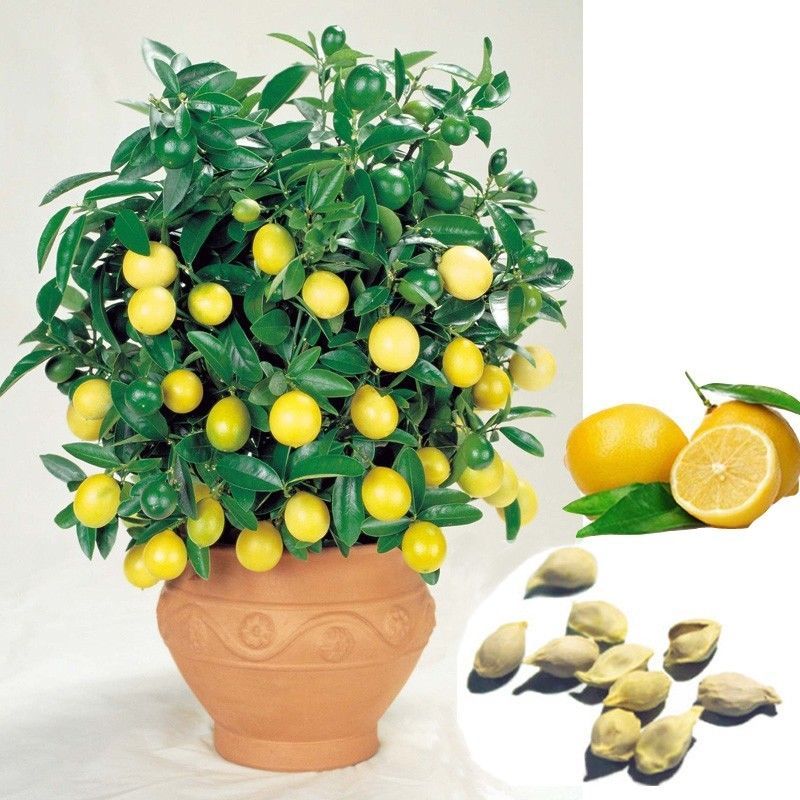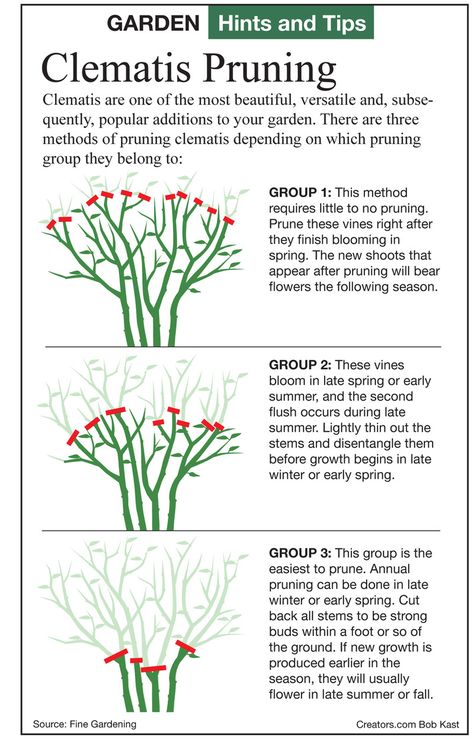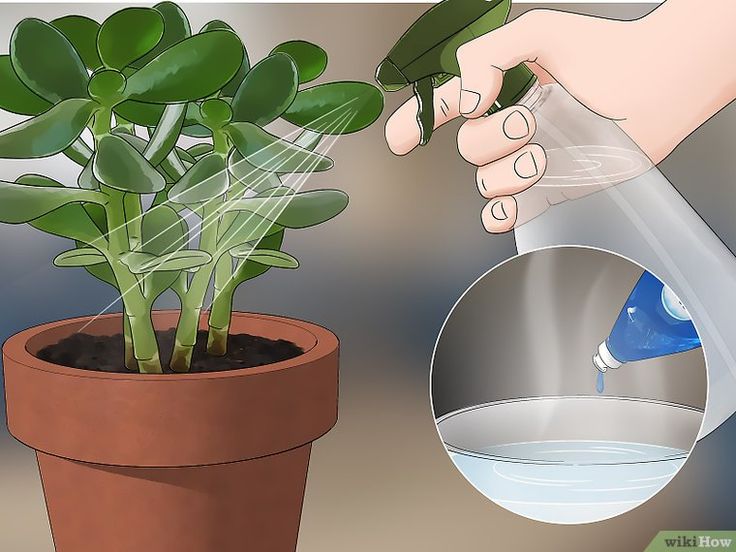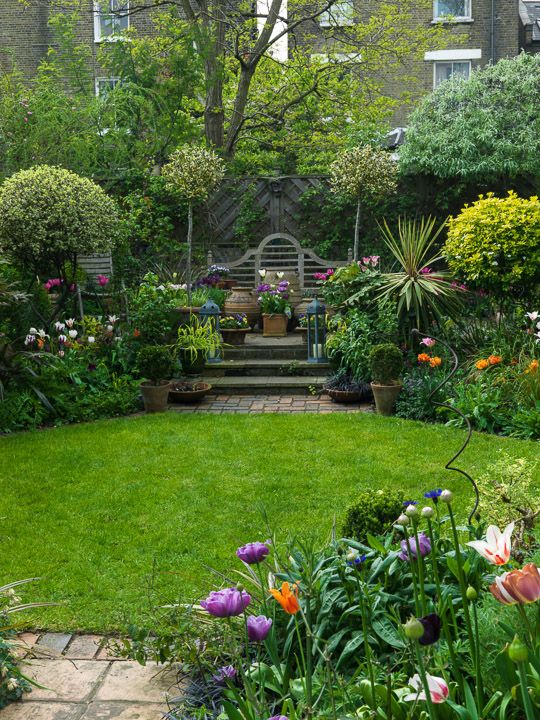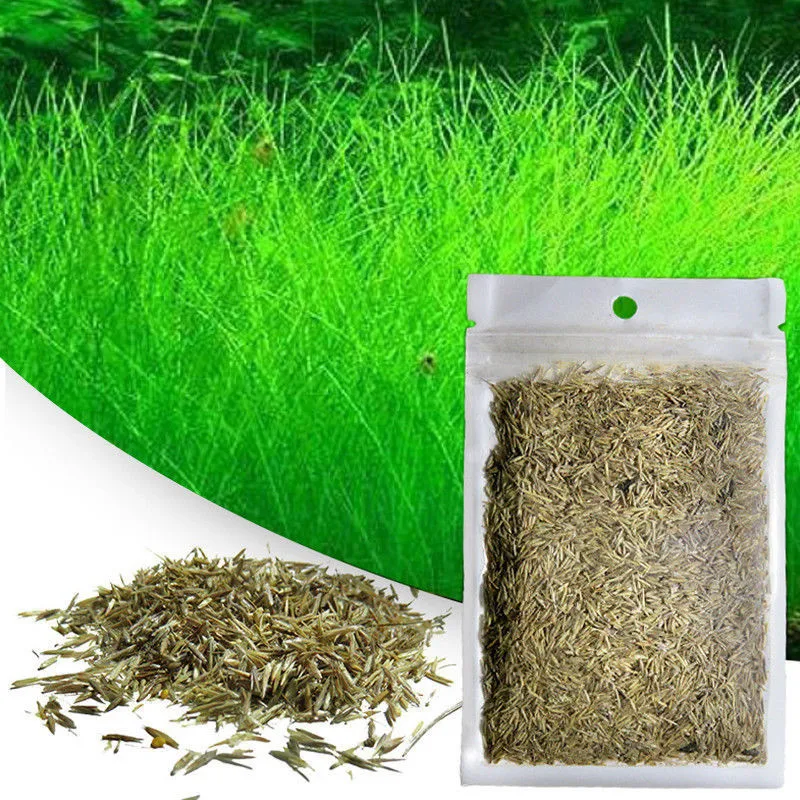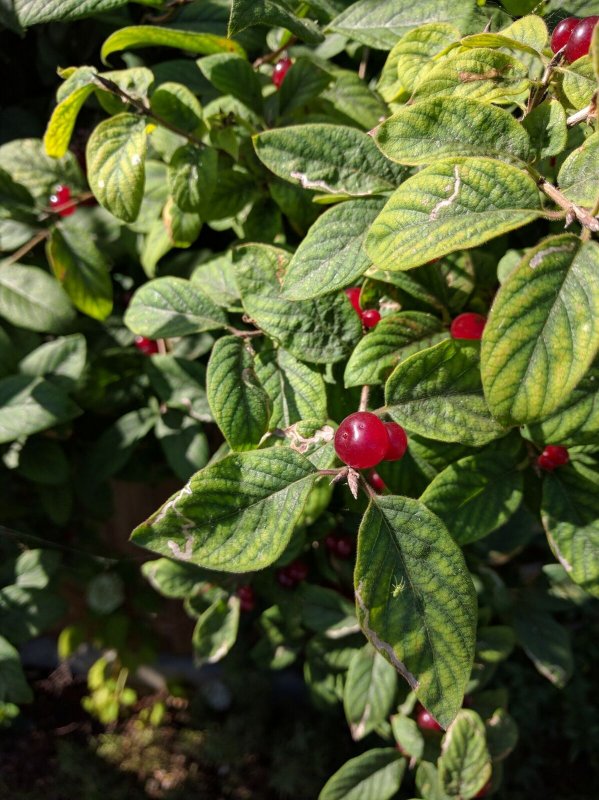Plant lemon seeds indoors
Plant lemon seeds and grow an air freshner. OK, I will try this and see if it works. Have any of you done this?
12/11/2019
2 Comments
https://www.therealhealthything.com/2019/12/how-to-plant-a-lemon-in-a-cup-and-make-your-home-smell-incredible/
It doesn't turns out there is really no need to go buy small lemon trees to plant indoors or in your backyard. You can just plant your lemon seeds from any lemon. Just select a lemon variety you like, and then you can use those seeds to grow your own.
The process is actually very simple and as your seeds begin to grow revealing the green seedlings, they will provide a very nice lemon scent for any room you place your flowerpot in. Talk about natural air freshener, smells good and is 100% chemical free too.
How To Plant Lemon Seeds Indoors
Here’s What You’ll Need:
◾Lemons
◾Small Flower Pot
◾Potting Soil
◾Knife
◾Plastic Wrap
◾Small pebbles (optional)
Cut a lemon in half and remove the plump mature seeds from it. All seeds must be rinsed in water to remove any sugar coating that may cause fungi to grow if left on the seeds. Your flower pot must be filled up to 2 inches to the top with the potting soil. Plant the seeds in a circle about half an inch deep into your potting soil, working from the center.
Moisten your potting soil, not to wet just wet enough. The plastic wrap is used to cover the flowerpot which you can place on top of your fridge until the seeds germinate. After germination, you can move them to an area that gets some sunlight. When you are ready, transfer the young lemon trees to bigger pots or outside.
taken from http://homesteadlifestyle.com/how-to-plant-lemon-seeds-indoors/
Here is a little more to do with the seeds, and this is the one I am going to try.
How to plant a lemon in a cup and make your home smell goodIn fact, your home is the place you come back to after long days at work and deserves to be embellished and taken into consideration, precisely because of its influence on your physical and mental health.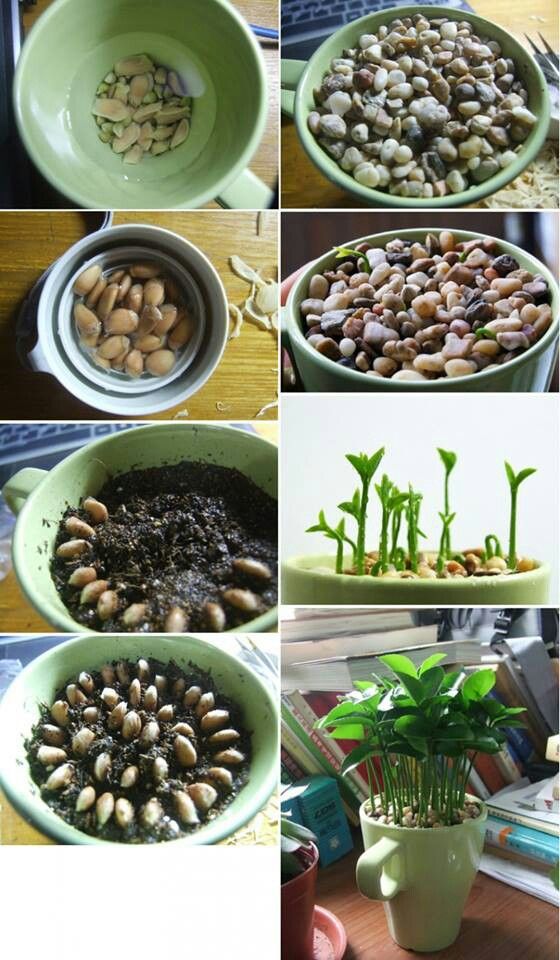
Eliminating and preventing unpleasant odors in the home, for example, is a way to keep the space you live in clean that, as a result, will be even more relaxing and, therefore, an additional source of well-being.
Planting a lemon tree, starting with a cup and simple seeds, could be a good idea to obtain a fragrant and attractive plant to place strategically in your home.
The benefits of having a lemon plant at home are many and but most important is its pleasant fragrance, which can help you feel calmer and more relaxed.
The scent of lemons also helps improve concentration and the quality of sleep. Considering the numerous beneficial effects, it might be a good idea to try cultivating a lemon plant at home.
Let's see how. The "ingredients" you will need are the seeds from a lemon of biological origin, some soil, a small vase or a ceramic cup, small pebbles, tweezers, water, and paper towels.
First, you can start by soaking the lemon seeds in a little water for about an hour. In this way, you will facilitate the removal of any pulp residues on the seeds.
In this way, you will facilitate the removal of any pulp residues on the seeds.
Then dry the seeds in paper towels and use tweezers to remove any additional pieces of fruit pulp that may have remained attached to the seeds.
At this point, you can put the lemon seeds into a small jar or glass of water; leave them like this for at least two days, until they begin to sprout.
After two days, you are ready to fill the ceramic cup or small vase with soil. Now, take the sprouted seeds directly from the jar or glass of water and insert them gently into the soil.
If you want to make the vase or cup more like a decorative object, you can sprinkle some small pebbles over the soil.
Now place your cup in a sunny place and water it whenever you see that it needs watering. In the summer, the watering will obviously be more frequent than in the winter.
Wait patiently for the plant to sprout and for it to flower .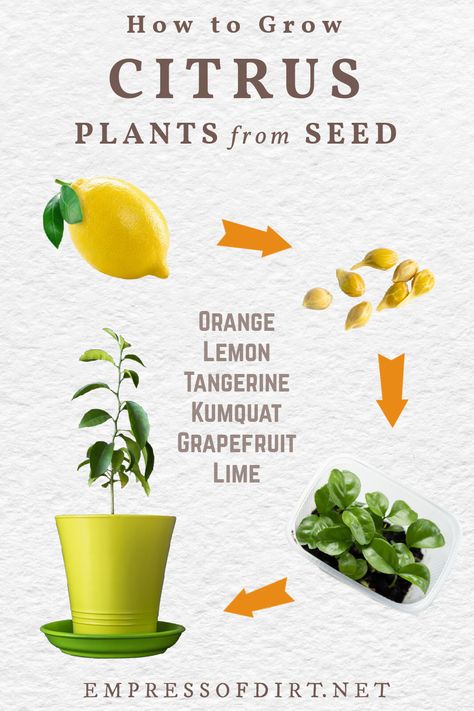 .. and you're done! Now you know how to grow your own small lemon tree at home, with just a few simple steps.
.. and you're done! Now you know how to grow your own small lemon tree at home, with just a few simple steps.
taken from https://www.wtvideo.com/video/23251/how-to-plant-a-lemon-in-a-cup-and-make-your-home-smell-good
images from via: Home Guides
till next time this is Becky Litterer, Becky's Greenhouse, Dougherty Iowa [email protected]
2 Comments
Grow Your Own Lemon Tree From Lemon Seeds - Farmers' Almanac
When life gives you lemons, grow a tree! We have easy step-by-step instructions to start your own fragrant fruit-bearing tree indoors.
by Michelle Nati Updated: March 25, 2021
How easy it to grow a lemon tree? Save some seeds and find out! During the winter months, these abundant fruit trees can grow indoors and will produce beautiful blooms that will make the house fragrant.
First, make sure the seeds you use are from organic lemons (non-organic lemons often contain non-sprouting seeds). Then, a little potting soil, some compost, a planting pot, a seedling pot, and a sunny indoor location are you need to complete the picture. Just follow these easy steps!
Just follow these easy steps!
How To Grow A Lemon Tree From Seeds
Step 1. Moisten the soil so that it is damp all the way through, and then fill the planting pot to about an inch below the rim.
Step 2. Cut open your lemon and remove a seed. The best way to clean it? Simply suck on it, but do not let it dry — the seed must remain moist when it’s buried.
Step 3. Plant it about half an inch down in the middle of the pot, and then seal the soil directly above it with a light spray of water.
Step 4. Cover the pot with clear plastic wrap, seal the edges, and poke small holes in the top before placing it in direct sunlight. (Remember to keep hydrating. Never let the soil dry out, but don’t spray too heavily, either.)
About two weeks later, a seedling will emerge. Take the plastic covering off, but continue to keep the soil damp. Make sure the young plant gets eight full hours of light per day and interment doses of organic fertilizer as needed.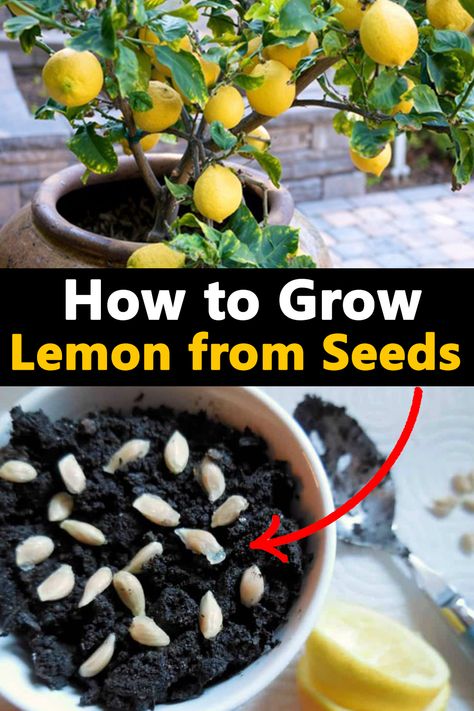
When the plant outgrows its seedling pot, put it in a planting pot and make sure to repeat the watering steps above. Older plants need less water than their younger counterparts but do keep the soil moist and fertilized nonetheless.
After their third year, healthy lemon trees begin to produce fruit. One that happens, a tree can yield a harvest consistently every year under the right climate and soil conditions. After a tree starts blossoming, it takes 4-12 months before a harvest, which usually takes place between summer and winter.
Once you have lemons, make lemonade, or these lemon cupcakes!
Michelle Nati
Michelle Nati is a freelance writer who worked in the entertainment industry for several years before before becoming a purveyor of oddities for Oddee.com. She has written for ApartmentShowcase.com, Complex Media, Time Out, Ranker, Mstarz, and a host of other websites.
- Email Address*
How to grow a lemon from a stone and get fruits?
Your goal is to grow a homemade lemon so that it becomes an interesting element of the interior and even hope to enjoy the vitamin fruits from the lemon tree.
Where to start? If there is no desire or opportunity to purchase a citrus tree, then the easiest way is to grow a lemon from a stone.
Today we will discuss in detail how to grow a lemon at home, how to care for homemade citrus fruits and what needs to be done so that indoor lemons begin to bear fruit.
Contents
- Citrus cultivation
- Seed lemon: where to start?
- Care of lemon seedlings
- Indoor lemon - pests and diseases
- Cuttings of lemons for quick fruiting
Growing citrus fruits
Homeland lemon - subtropical forests, where it grows wild.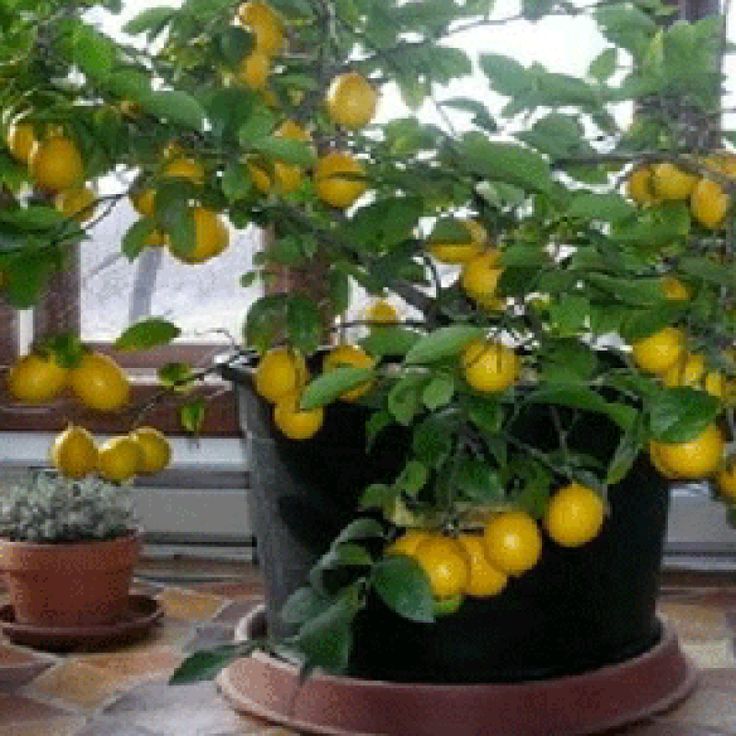 For many centuries, people have tried to spread it in the lands of Europe. The twentieth century was marked by the experiments of geneticists. Scientists have done a good job of breeding varieties that bear fruit well in northern latitudes and in room conditions.
For many centuries, people have tried to spread it in the lands of Europe. The twentieth century was marked by the experiments of geneticists. Scientists have done a good job of breeding varieties that bear fruit well in northern latitudes and in room conditions.
Today you won't surprise anyone with homemade lemon. Thanks to the efforts of professional breeders and amateur flower growers, indoor lemon has appeared in many home greenhouses and simply on windowsills. Citrus indoor plants always look amazing in the interior, but they delight us not only with their excellent appearance, but also with edible fruits.
The citrus tree is an evergreen, moisture-loving, shade-tolerant short-day plant. The room actively begins to grow in February-March, stops - in November. Lemon propagates in the following ways:
- Seeds - a familiar bone taken from a fruit.
- Vegetative - cuttings, grafting, layering.
Seed lemon: where to start?
Use only fresh seeds. They are selected from mature fruits that do not have signs of disease. Purely theoretically, this is true, but lemons come to us from supermarkets and bazaars.
They are selected from mature fruits that do not have signs of disease. Purely theoretically, this is true, but lemons come to us from supermarkets and bazaars.
These fruits are definitely not freshly picked. How to be? Dried seeds that have lain for a month at room temperature significantly lose their germination capacity, but still germinate.
In order to 100% grow a lemon at home, you need to stock up not just one or two seeds, but a lot more. Out of a dozen seeds, there will definitely be several sprouts.
Do not be afraid to grow many seedlings at once. It is not a fact that all your lemons from the stone at home will live to bear fruit. Some will die due to diseases, others will suffer when you vaccinate them.
We start growing homemade lemon from the stone as follows:
- We buy special soil or prepare the soil ourselves from river sand, soddy soil, humus.
- Spread the prepared soil mixture into separate small pots or cups.

- Seeds are planted in moist soil to a depth of 3 cm.
- Cover with foil to create a better microclimate.
- We are waiting for the sprouts to appear, which appear after about 3 weeks.
- If 2 shoots grow from one lemon seed, one (which is weaker) should be removed.
Growing citrus in this way is the easiest and most reliable option at home. Many flower growers have a decorative lemon at home, many waited for their fruiting. It should be noted that homemade tangerines are grown in a similar way.
Citrus plants grown from seeds are better adapted to indoor conditions, more hardy and more viable than cuttings or grafts. Fully fruit-bearing cultivated seedlings grow from the seeds. Their only drawback is that they begin to bear fruit late.
Caring for lemon seedlings
It is not difficult to germinate a lemon from a stone, it will be more problematic to care for it further. When seedlings appear, the film is gradually removed, accustoming them to the conditions of the room.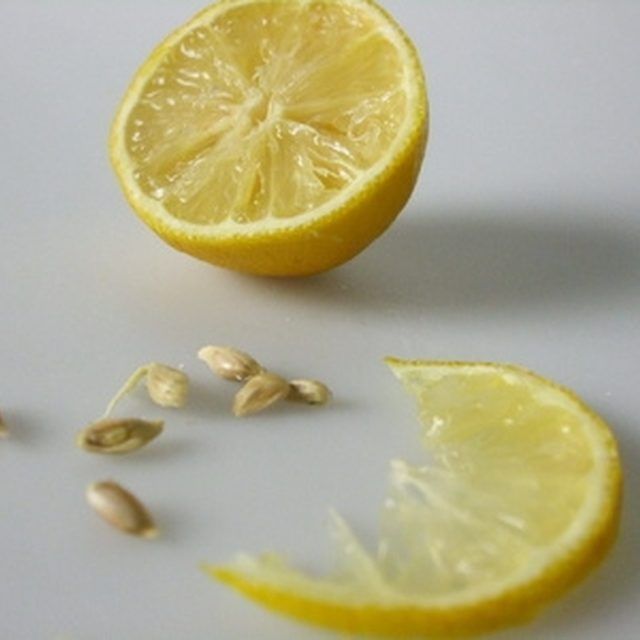
Regular care of homemade lemon means that it:
- Water moderately, avoiding waterlogging, so as not to cause root rot. In hot weather, watering is carried out 3 times a week, in winter it is reduced to 2 times.
- Dust citrus leaves every week, spray regularly with water.
- Keeping near the battery requires additional air humidification.
- Turn the lemon gradually by 2 cm per month around its axis so that there is no sharp change in the light regime for the leaves.
- Transplant indoor lemon every year in the spring into a larger pot. You can not immediately plant a plant in a pot that is not the right size.
- Good gains are obtained by fertilizing with complex fertilizers "Zdraven", "Ideal" or special fertilizers for citrus fruits with the addition of trace elements of zinc, boron, manganese - once every 2 weeks.
To prevent a lemon from turning into a wild dense tree, the crown must be constantly shaped.
The central shoot is cut off at a distance of 20 cm from the ground. Branches of the second order appear, which, when they reach 18 cm, are pinched. The process is carried out until shoots of the fourth order appear. Flower buds are laid on them, and fruiting begins.
Indoor lemon - pests and diseases
Lemons grown at home are most often affected by scale insects, spider mites, aphids, mealybugs. All these pests feed on the sap of the plant, causing the leaves to dry out and the shoots to bend.
To prevent pests from destroying the lemon tree, the following general control measures should be carried out:
- Remove pests from the stem with a soft toothbrush, from the leaves with cotton swabs, previously moistened with a soapy solution of anabazine sulfate.
- Rinse the solution from the plant every other day. Repeat treatment after a week.
- In case of a large number of pests, treat the tree with infusion of celandine, tobacco, onion peel or Actellik, Ditox, Fitoverm preparations.
 It is necessary to use preparations for the destruction of pests very carefully, as these are the strongest pesticides.
It is necessary to use preparations for the destruction of pests very carefully, as these are the strongest pesticides.
The most common diseases of indoor citrus fruits are black fungus, gommosis. Why are they dangerous for homemade lemon? The soot fungus covers the leaves with a dark gray bloom, disrupting the normal nutrition of plants. Gommosis forms a gum that flows from damage to the bark, causing the leaves and branches to dry out.
Indoor lemon diseases are removed:
- Cleaning the diseased area, treating with copper sulphate.
- Coating with RanNet (garden paste putty).
- By wiping with a wet cloth (if fungus).
- Bark and leaf pest control.
- Top dressing with complex fertilizers to maintain the vitality of the tree.
For a novice gardener, advice on how to deal with homemade lemon diseases will seem incomprehensible, but there is nothing complicated here. In all specialized stores you will find the proposed preparations, and there are detailed instructions on the packages.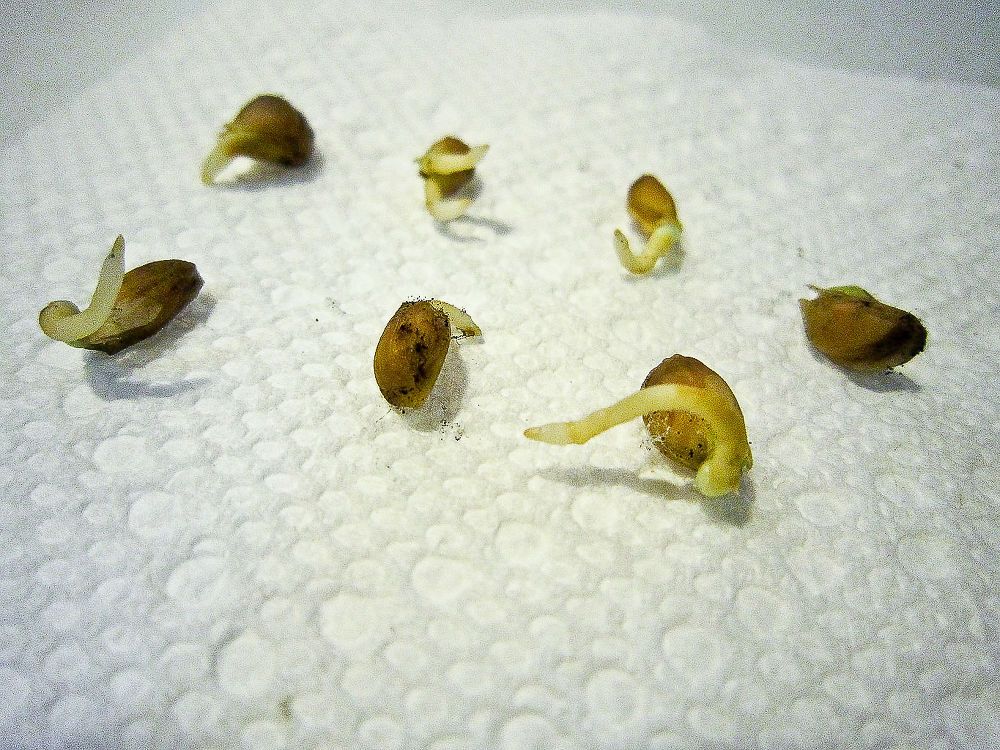 If you have specific questions on how to grow a lemon from a stone, how to care for it, feel free to ask them on the flower growers forums. You will definitely be helped!
If you have specific questions on how to grow a lemon from a stone, how to care for it, feel free to ask them on the flower growers forums. You will definitely be helped!
Lemon cuttings for fast fruiting
Why cuttings? Lemons grown in this way begin to bear fruit faster. The only negative is that the future tree should get used to the changed living conditions.
If you already have some experience in floriculture, then it will not be difficult to grow a fruiting lemon from cuttings:
- The best time to germinate roots from cuttings is March-April. Cuttings are taken only from a fruiting lemon.
- The landing box is prepared in advance. Make small holes in it. For drainage, washed expanded clay, fragments of brick or gravel are used. Then pour 1.5 cm river sand in layers, 6 cm nutrient mixture, finish with 2 cm sand.
- Cuttings are harvested from last year's growth. Make an oblique cut, cover it with warm wax or garden pitch.
 The branches are divided into several parts, 4 buds each.
The branches are divided into several parts, 4 buds each. - Before planting in the ground, the lower parts of the cuttings are immersed for a day in a solution of heteroauxin. Sprinkled with wood ash, planted in prepared soil at a distance of 15 cm one at a time, leaving 2 buds on the surface.
- Press the earth firmly around them, spray with warm water. Create a mini-greenhouse, covering with a film. For better rooting, a little heating from below is necessary.
- Keep the temperature around the cuttings at about 25°C. At a lower one, the leaves fall off, their condition worsens, the rooting time doubles, the percentage of survival decreases.
- For the first 2 weeks, the leaves are sprayed with water 4 times a day, then reduced to two. The film is periodically lifted, the greenhouse is ventilated. Subject to all conditions, a good root system grows in a lemon in a month.
- Rooted cuttings are transplanted one at a time into clay pots using a drainage layer and nutrient soil.
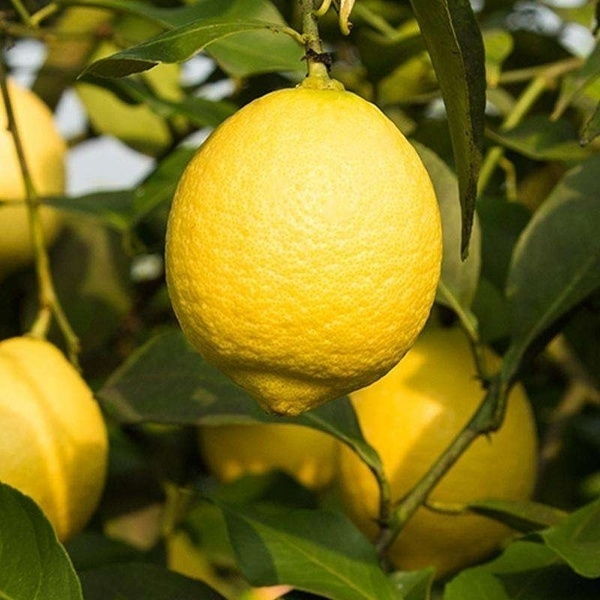 To increase branching, pinch the central root.
To increase branching, pinch the central root. - After placing the plant in a new container, carefully sprinkle the soil on the roots, pressing it with your hand. In several stages, they are poured with warm water so that the earth settles.
- Spray the leaves, put for 2 weeks in a shaded place. After that, young trees are gradually accustomed to light.
Over time, you will begin to do many processes for caring for citrus fruits on an intuitive level, experience will affect. Growing indoor lemon at home is an interesting and exciting pastime. For many, this becomes a hobby for many years, maybe this is your new hobby?
Household lemon from the stone
Under natural conditions, lemon trees grow in the tropical zone and reach a height of two to six meters. This is a perennial evergreen plant. When growing lemon trees in the conditions of standard city houses and apartments, these plants reach a smaller height, but if the plant is not formed, then it can stretch very much.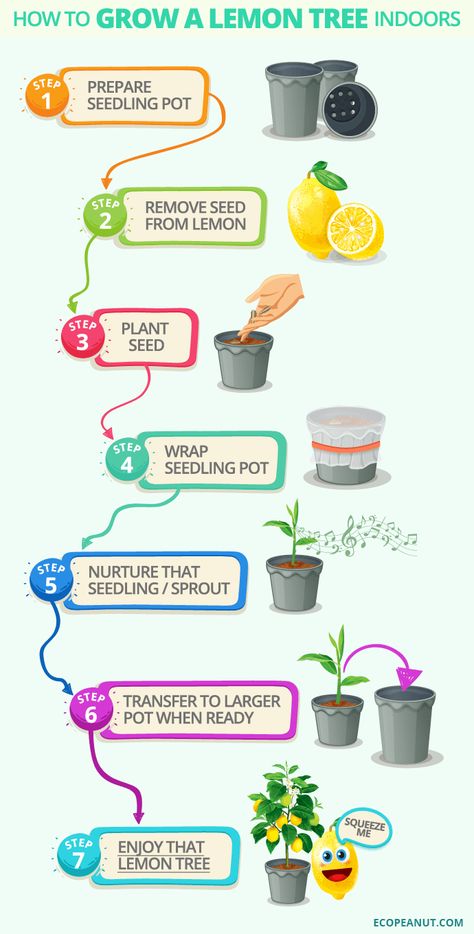 Growing lemon from seeds at home does not change its love for consistently warm temperatures, high humidity, and it also requires care.
Growing lemon from seeds at home does not change its love for consistently warm temperatures, high humidity, and it also requires care.
Contents
How can you grow a lemon from a seed at home and how will it differ from a citrus varietal plant from a cutting?
You can plant a lemon tree at home using cuttings or seeds. It should be borne in mind that varietal plants retain their properties only when propagated vegetatively, that is, propagated by cuttings. From seeds, you will get a citrus plant that will not bear fruit at home.
Only varietal homemade lemon will delight you with fruits
Special homemade citrus varieties, such as Pavlovsky lemon and mandarin, are able to bear fruit throughout the year and at the same time have small crowns, and their pleasant citrus aroma when flowering and aesthetically attractive appearance bring comfort to your space.
In order to grow a lemon from a stone , you need to find seeds.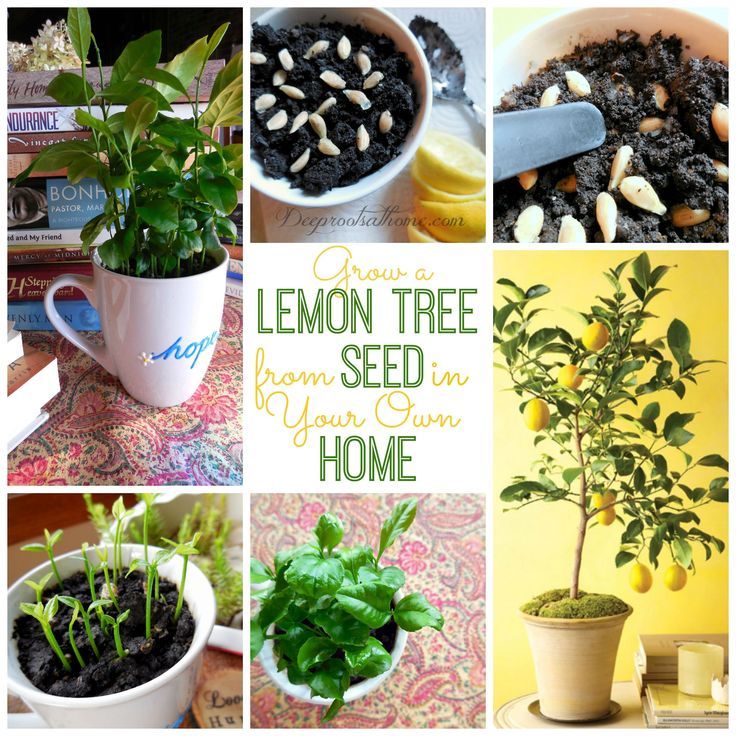 To obtain seeds, it is enough to buy ripe, strong fruits in any store that have a uniform color without signs of damage or rot. Most commercially available lemons contain seeds inside that can be successfully used to plant a plant. The disadvantage of growing a lemon tree from seeds can be considered a long period of plant growth. Plants obtained from cuttings of varietal plants develop much faster and are guaranteed to bear fruit with proper care.
To obtain seeds, it is enough to buy ripe, strong fruits in any store that have a uniform color without signs of damage or rot. Most commercially available lemons contain seeds inside that can be successfully used to plant a plant. The disadvantage of growing a lemon tree from seeds can be considered a long period of plant growth. Plants obtained from cuttings of varietal plants develop much faster and are guaranteed to bear fruit with proper care.
Preparing Lemon Seeds for Planting
For planting lemon trees from seeds, well-shaped seeds are suitable, the integrity of which is not damaged. For a greater likelihood of their successful germination, it is best to take seeds from several different lemons. Also, to increase the germination of seeds, soak them for several hours in a root solution. Next, plant in pots or boxes. We plant often, it is better to remove the extra seedlings later than not to wait for them at all. For planting, you can buy ready-made soil for citrus fruits, or you can mix peat and flower soil in equal proportions. At the bottom of the planting tank, be sure to put a good layer of drainage. In this capacity, expanded clay balls or ordinary foam are usually used.
At the bottom of the planting tank, be sure to put a good layer of drainage. In this capacity, expanded clay balls or ordinary foam are usually used.
Planting a lemon seed in the ground
Lemon seeds should not be buried too deep in the soil. It is enough to immerse them to a depth of 1 cm to 0.5 cm. In no case should you fill the soil, but it is imperative to keep it moderately moist. The temperature most conducive to seed germination is 18-22 degrees. With the correct observance of these simple conditions, a couple of weeks after planting, the seeds will give the first shoots. Among these seedlings, it will be necessary to select only strong, strong and healthy plants, the rest will have to be removed. It is recommended to cover the seedlings with a glass jar to maintain the desired microclimate and humidity for the plant. Once a day, you need to ventilate the plants, removing the jar for a few minutes. Containers with seedlings should be in a bright, warm place without direct sunlight on them.
Young seedlings of lemon
Seedlings when growing lemon from the stone can be transplanted into separate small pots only after the first pair of true adult leaves appear on the seedlings. Drainage in new pots is required. It is advisable not to damage the roots during transplantation. To do this, it is best to transplant the plant along with the old peat ball, without trying to separate it from the roots. When a small tree grows to 15 centimeters, it will need to be transplanted again into a larger pot and diameter.
Young lemon from the stone
When planting a lemon tree, a cutting about 8-10 cm long is taken from a cutting, on which a couple of leaves and a few live buds are left. Before placing the cutting in the ground, it is desirable to treat its base with a root formation stimulator, for example, Kornevin, after which it is planted in the soil to a depth of 3-4 centimeters and covered with a jar or bag. Until the cutting has roots, it will need to be sprayed daily with water and the soil in which it takes root should be well moistened. Rooting occurs about a month and a half after planting. It should be borne in mind that only some cuttings take root - this is to some extent a matter of luck. Then the plant can be transplanted into a permanent pot.
Rooting occurs about a month and a half after planting. It should be borne in mind that only some cuttings take root - this is to some extent a matter of luck. Then the plant can be transplanted into a permanent pot.
Lemon from a cutting
When watering a lemon tree, the earthen ball in the pot must be moistened evenly. Insufficient and uneven moisture can lead to drying of the roots and their death. When the tree is old enough and strong enough, it will need a lot of sunlight. But lemons do not tolerate direct sunlight, it is better to choose a bright place for it, which receives diffused light. Lemon trees do not like constant movement from place to place. Every spring it must be transplanted into a larger container. You can stop at a ten-liter container, regularly changing only the top layer of soil and actively fertilizing the plant.
Proper care will ensure the flowering and fruiting of the varietal lemon
During the heating season or dry summer, it is necessary to spray the plant daily to maintain the desired moisture.